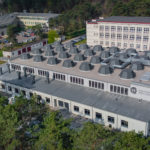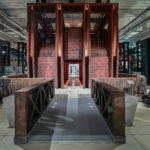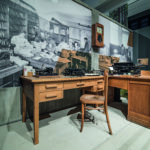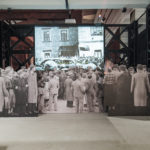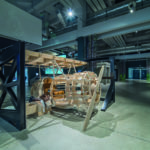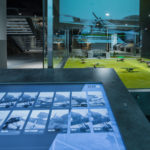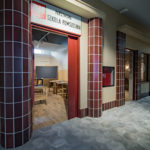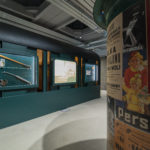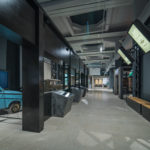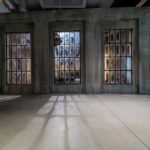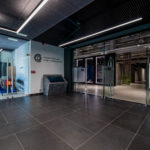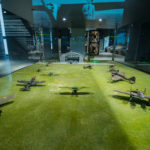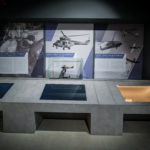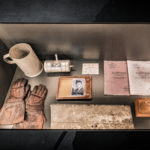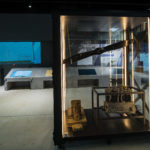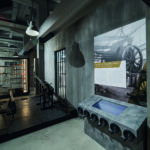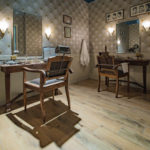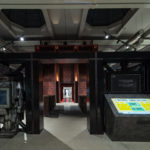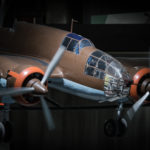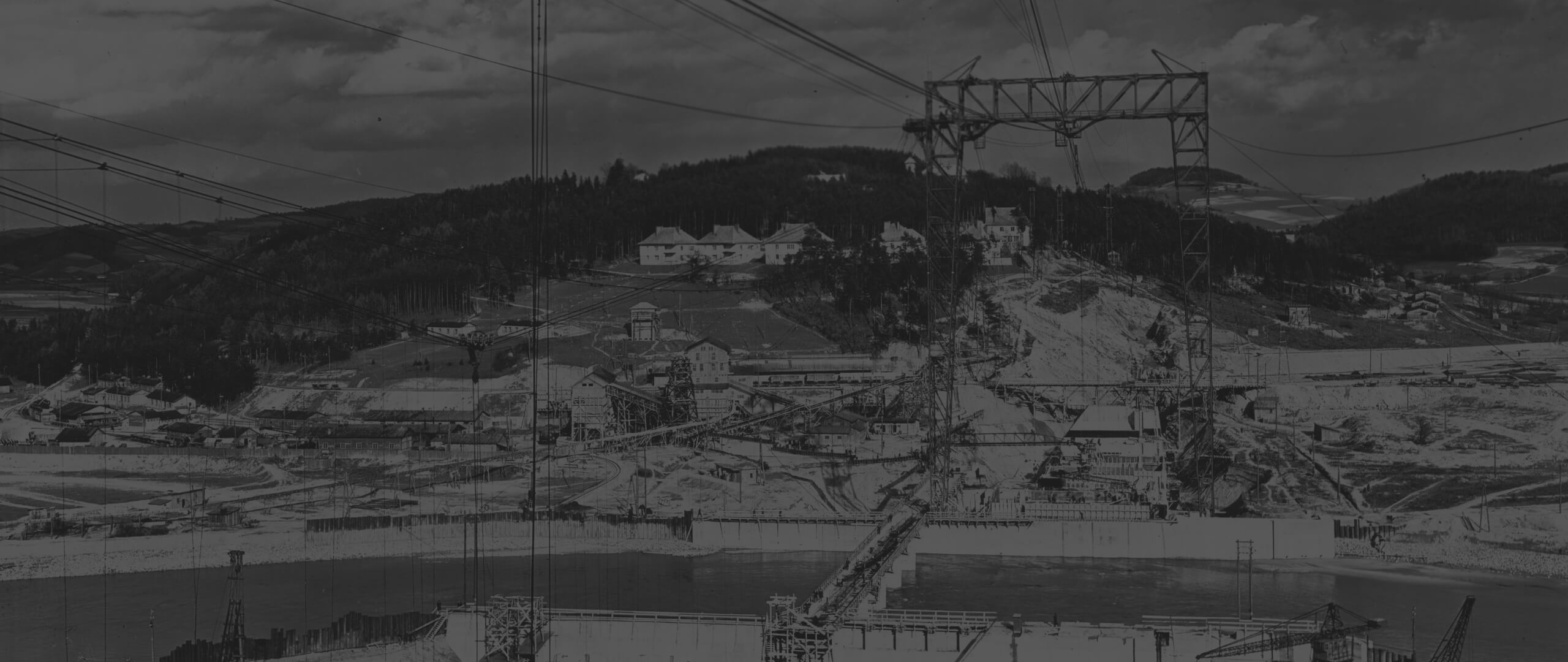
PERMANENT EXHIBITION
CENTRAL INDUSTRIAL DISTRICT. THE BIRTH OF INNOVATIVE INDUSTRY IN POLAND.
The Museum of the Central Industrial District is the result of years of efforts by the Stalowa Wola Regional Museum to present the extraordinary history and heritage of the largest economic investment of the Polish interwar period to the museum audience. After the exhibition “CID for the Future. People-Industry-Architecture”, which was the first exhibition on such a scale devoted to the economic achievements of the Second Republic, the time has come to present this unique chapter of Polish history in a new version. The Museum of the Central Industrial District and its heart – the exhibition “The Birth of Innovative Industry in Poland” – is a fascinating journey through the industrial heritage of the CID, the meanders of economic and industrial history and the story of the people who laid the foundations of one of the greatest economic miracles in the history of Poland. We invite you to the world of modern technological thought and the ideas that guided the builders of the CID: working across divisions and joining forces in pursuit of a common goal.
The Museum of the Central Industrial District is a new institution on the cultural map of the Podkarpacie region. It was established to show the phenomenon of the largest economic and social undertaking of the Second Republic of Poland and to tell the story of its industrial heritage in an attractive and accessible way. It is located in a revitalized historic building of former school workshops.
In addition to the permanent exhibition entitled. “Central Industrial District. The Birth of Innovative Industry in Poland”, there are also temporary exhibitions and a space organized with the youngest in mind – “City for Children” – and a riddle room titled “The extinguished star of CID – the occupation.” The CID Museum is also a new space for conferences and seminars, concerts and thematic events related to the history of CID and technology and invention. Its offer has been addressed to various audiences: organized groups, families and individual visitors. It is also a friendly place for people with disabilities.
The expositions feature nearly 800 monuments. The entire project is complemented by original and modern design, stylized films with narrators, projections of archival films, multimedial quizzes and interactive presentations, which creates the impression of being surrounded by images, sounds and even the smell of old factory and workshop halls. The museum guarantees unforgettable fun through the use of multimedia screens, headphones, special switches or devices that trigger successive interactive zones. In the children’s spaces you can, among other things, change the wheel on your car or play as a young editor, architect, firefighter or chemist. Every visitor to the COP Museum can also feel the fun of flying an airplane thanks to a simulator with VR goggles, dress up in a steelworker’s outfit or see a martens furnace from the inside. There is also a pre-war street of Stalowa Wola, from which we can enter residential and service spaces.
The bulk of the monuments in the new museum present the heritage of Stalowa Wola, the flagship investment of the CID. One of them is the original tableau from 1939, made by employees for Eng. Bronislaw Chudzyński – the construction manager of the Southern Works in Stalowa Wola. It contains, among other things, a dedication and photographs of employees with their names.
The exhibition features a unique PZinż Major propulsion unit. It is a pre-war aircraft engine produced by Engine Plant No. 2 in Rzeszow. It was found near the Derevyanchyce airfield in Slonim, Belarus. In 2021 it fell into the hands of an expert who restored it. Thanks to financial support from the Bank Gospodarstwa Krajowego, it found its way into the collection of the Regional Museum in Stalowa Wola. It is a unique object, similar can only be seen in two other Polish museums.
A large part of the CID Museum’s permanent exhibition is devoted to small arms as part of the armament section. On display there are original VIS wz. 35 pistols, which are an iconic Polish design and the flagship product of the Radom Weapons Factory.
An extremely interesting relic is a tire – one of the first produced at the “Stomil” Driving Rubber Factory in Debica. It is worth mentioning that the Dębica factory used artificial rubber, the so-called ker, developed by Polish engineer Waclaw Szukiewicz, to produce tires.
_________________________
The project entitled “Revitalization of modernist school workshops in Stalowa Wola for the needs of the Central Industrial District Museum”.
– co-financed by the European Union under Measure 8.1 of Priority Axis VIII Protection of Cultural Heritage and Development of Cultural Resources of the Operational Program Infrastructure and Environment 2014-2020.
Project No.: POIS.08.01.00-00-0096/17
Value of the Project – 26,272,492.59 PLN
European Funds contribution – 16,716,149.03 PLN
_________________________
Permanent exhibition “Central Industrial District. The Birth of Innovative Industry in Poland”
Idea and concept: Lucyna Mizera
Scenario: Lucyna Mizera, Katarzyna Zarzycka, Karolina Perrin
Query: Wojciech Chudzik
Consultation: Michal Wysocki
Children’s track: Ewa Solarz
Executive script of the children’s path: Anna Garbacz, cooperation Marek A. Stańkowski
Riddle Room: Escape Artists
Executive script of the riddle room: Anna Garbacz, consultation: Joanna Rybak
Authors of multimedia content scenarios for the Museum: Dr. Bartłomiej Belcarz, Anna Garbacz, Marek A. Stańkowski
Design and execution of the arrangement – exhibition scenography and multimedia content: Consortium: New Amsterdam Sp. z o.o., Fabryka Dekoracji Marcin Pietuch
Substantive coordinators of the Project: Lucyna Mizera (until 25.02.2021), Romuald Chagowski, Aneta Garanty, Wojciech Chudzik.
Substantive cooperation: Beata Trybuła, Monika Kuraś, Marek Wiatrowicz
Conservation and digitization of COP Museum monuments: Sabina Szkodlarska Monument Conservation, NOX Wojciech Szkodlarski
Technical coordinators of the Project: Paweł Szegda, Janusz Gajda
Financial Coordinator of the Project: Dorota Jargieło-Pawlak
Procurement Coordinator: Marcin Młynarski
Delivery of multimedia equipment: A+V Sp. z o.o.
Construction design: prof. Marcin Furtak Design Studio F-11
General contractor for construction works: Zaklad Remontowo-Budowlany Józef Bajek
Contract engineer: BicoGroup Tomasz Przybylski
Investor’s supervision inspector: BicoGroup Tomasz Przybylski





